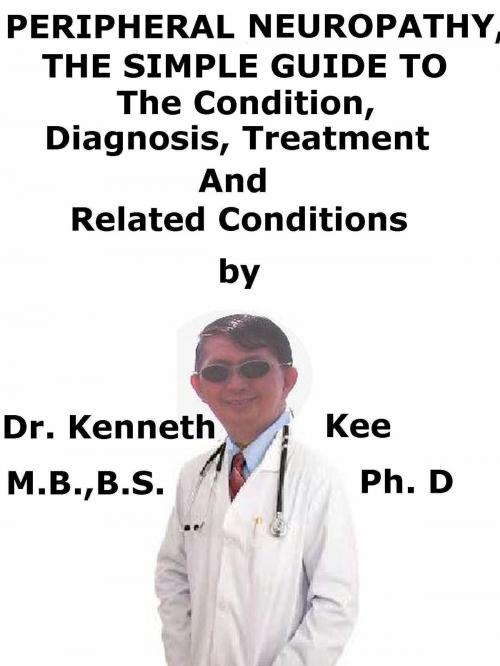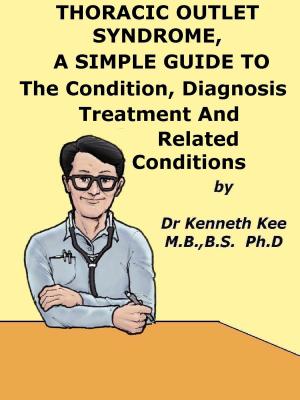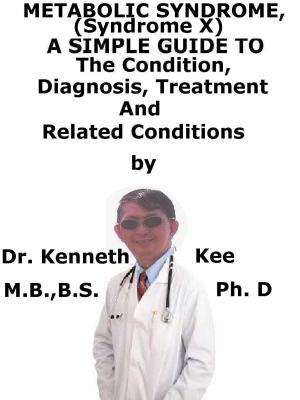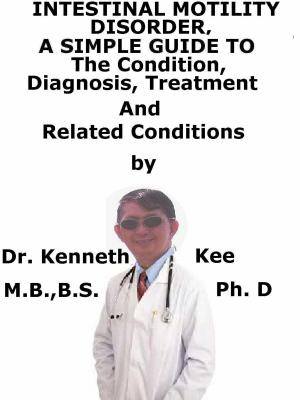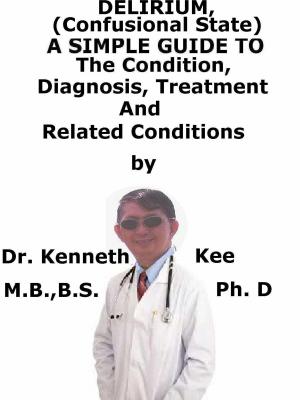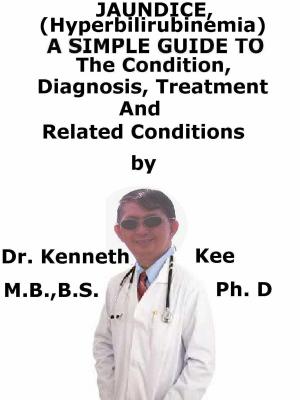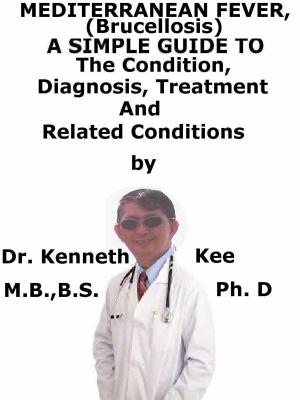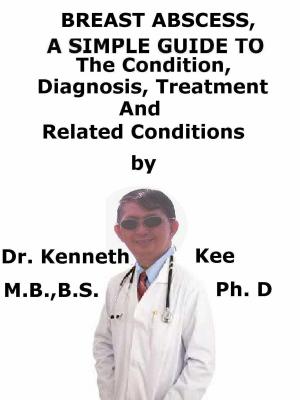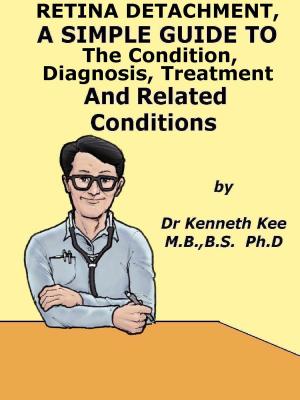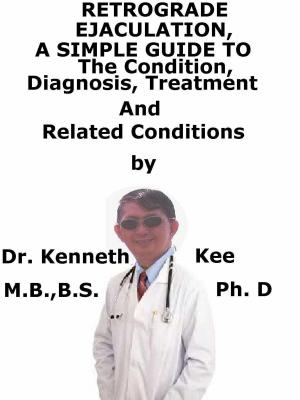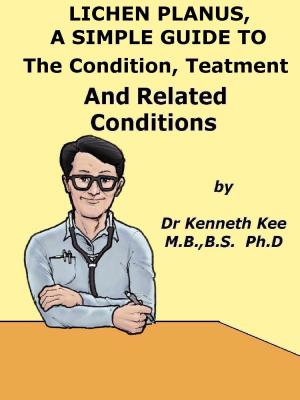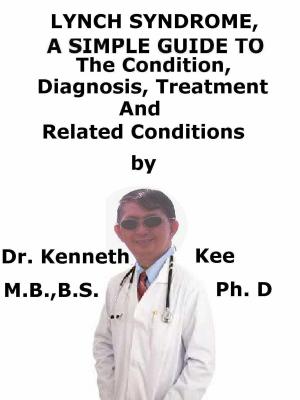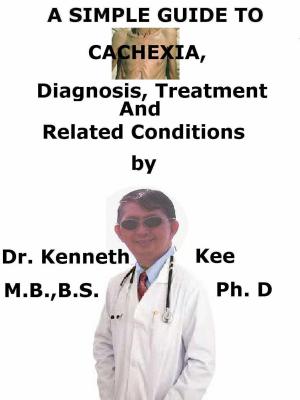Peripheral Neuropathy, A Simple Guide To The Condition, Diagnosis, Treatment And Related Conditions
Nonfiction, Health & Well Being, Health, Ailments & Diseases, Nervous System & the Brain, Medical, Specialties, Internal Medicine, Neurology| Author: | Kenneth Kee | ISBN: | 9781370541478 |
| Publisher: | Kenneth Kee | Publication: | October 3, 2016 |
| Imprint: | Smashwords Edition | Language: | English |
| Author: | Kenneth Kee |
| ISBN: | 9781370541478 |
| Publisher: | Kenneth Kee |
| Publication: | October 3, 2016 |
| Imprint: | Smashwords Edition |
| Language: | English |
Peripheral neuropathy (PN) is a medical disorder caused by damage to or disease affecting peripheral nerves, which may reduce sensation, movement, gland or organ function, or other parts of health, depending on the type of nerve affected.
Peripheral nerves bring information to and from the brain.
They also transfer signals to and from the spinal cord to the rest of the body.
Peripheral neuropathy usually suggests that these nerves do not work properly.
Peripheral neuropathy may cause damage to a single nerve or nerve group.
Peripheral neuropathy may be classified as genetic and acquired.
Often, no cause can be found (idiopathic).
A. Genetic: Some nerve diseases are inherited in families.
Acquired Conditions that may cause neuropathy are:
1. Traumatic injury to the nerve
a. Broken bone that affects a nerve
b. Glue, lead, mercury, and solvent poisoning
c. Drugs that treat infections, cancer, seizures, and high blood pressure
d. Pressure on a nerve, such as from carpal tunnel syndrome
e. Being exposed to cold temperatures for a long period of time
f. Pressure from bad-fitting casts, splints, a brace, or crutches
Symptoms are present:
1. Pain and Numbness
2. Muscle Problems
3. Body Organs Disorders
Investigations:
Electromyography and Nerve conduction studies
Treatment:
People with diabetes should try to regulate their blood sugar and avoid alcohol drinks
The patient may have therapy to learn exercises to increase muscle strength and control.
Braces, splints, and wheelchairs may improve movement or the ability to use an arm or leg that has nerve damage.
Medicines such as painkillers can reduce pain in the feet, legs, and arms but not numbness
Medicines can help with urine, abdominal and erection problems
The patient may need surgery to remove pressure from a nerve.
When a medical condition can be found and treated, the outlook may be excellent.
But sometimes, nerve damage can be permanent, even if after the cause is treated.
TABLE OF CONTENT
Introduction
Chapter 1 Peripheral Neuropathy
Chapter 2 Causes
Chapter 3 Symptoms
Chapter 4 Diagnosis
Chapter 5 Treatment
Chapter 6 Prognosis
Chapter 7 Guillian Barre Syndrome
Chapter 8 Carpal Tunnel Syndrome
Epilogue
Peripheral neuropathy (PN) is a medical disorder caused by damage to or disease affecting peripheral nerves, which may reduce sensation, movement, gland or organ function, or other parts of health, depending on the type of nerve affected.
Peripheral nerves bring information to and from the brain.
They also transfer signals to and from the spinal cord to the rest of the body.
Peripheral neuropathy usually suggests that these nerves do not work properly.
Peripheral neuropathy may cause damage to a single nerve or nerve group.
Peripheral neuropathy may be classified as genetic and acquired.
Often, no cause can be found (idiopathic).
A. Genetic: Some nerve diseases are inherited in families.
Acquired Conditions that may cause neuropathy are:
1. Traumatic injury to the nerve
a. Broken bone that affects a nerve
b. Glue, lead, mercury, and solvent poisoning
c. Drugs that treat infections, cancer, seizures, and high blood pressure
d. Pressure on a nerve, such as from carpal tunnel syndrome
e. Being exposed to cold temperatures for a long period of time
f. Pressure from bad-fitting casts, splints, a brace, or crutches
Symptoms are present:
1. Pain and Numbness
2. Muscle Problems
3. Body Organs Disorders
Investigations:
Electromyography and Nerve conduction studies
Treatment:
People with diabetes should try to regulate their blood sugar and avoid alcohol drinks
The patient may have therapy to learn exercises to increase muscle strength and control.
Braces, splints, and wheelchairs may improve movement or the ability to use an arm or leg that has nerve damage.
Medicines such as painkillers can reduce pain in the feet, legs, and arms but not numbness
Medicines can help with urine, abdominal and erection problems
The patient may need surgery to remove pressure from a nerve.
When a medical condition can be found and treated, the outlook may be excellent.
But sometimes, nerve damage can be permanent, even if after the cause is treated.
TABLE OF CONTENT
Introduction
Chapter 1 Peripheral Neuropathy
Chapter 2 Causes
Chapter 3 Symptoms
Chapter 4 Diagnosis
Chapter 5 Treatment
Chapter 6 Prognosis
Chapter 7 Guillian Barre Syndrome
Chapter 8 Carpal Tunnel Syndrome
Epilogue
